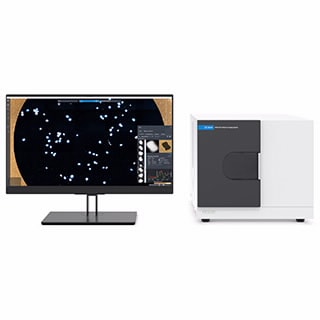
产品详细信息
- 高度自动化的工作流程使您能够从一系列样品基质中定位、描述和鉴定微塑料颗粒
- 无需更换任何光学元件,即可分析大样品区域并成像,然后更详细地分析较小的目标区域。
- 使用 Agilent Clarity 软件实现全面控制,放置样品-自动运行方法仅需极少的仪器操作,小巧体积节省了实验台空间
- 用于实时谱图匹配的内置文库。结果随谱图采集持续更新。
- 量子级联激光器 (QCL) 和电冷却检测器无需液氮,降低了运行成本并简化了维护过程。
- 机载 ATR 允许进一步分析未知颗粒,而无需移除样品。谱图可以导出到外部文库用于确认鉴定结果。
- 使专业光谱工作者和受过培训的一般技术人员都能够快速准确地分析和表征样品。
- 重要资料
-
Best Practice for On-Filter Analysis of Microplastics Using Agilent 8700 Laser Direct Infrared Chemical Imaging System
This white paper describes the best practices for performing accurate on-filter microplastic analysis using the Agilent 8700 LDIR Chemical Imaging System.
- 白皮书
- English
- 2023 年 1 月 19 日
- 4.01 MB
Accurate Microplastic Analysis of Bottled Drinking Water Using the Agilent 8700 LDIR
This study demonstrates the use of the Agilent 8700 LDIR and Cary 630 FTIR to investigate the presence and source of microplastics in bottled drinking water.
- 应用简报
- English
- 2023 年 2 月 8 日
- 4.11 MB
Achieving Accurate Microplastics Characterization
In this ebook, we demonstrate why LDIR can be considered an accurate and reliable technique for the identification and characterization of microplastics in a full range of sample-types.
- 基础导论
- English
- 2023 年 7 月 23 日
- 19.23 MB
- 应用简报
- 产品样本
- 目录
- 数据表
- 宣传单页
- 技术概述
- 白皮书
- 现场准备清单
-
8700 LDIR Site Preparation Checklist
8700 LDIR Site Preparation Checklist
- 现场准备清单
- English
- 2019 年 10 月 10 日
- 138.77 KB
- 用户手册
- 说明书
- 出版物
-
Lars Hildebrandt
分析化学家, Helmholtz-Zentrum Geesthacht,瑞士
观看 Lars 介绍如何通过 LDIR 在几分钟内实现大面积成像,无需再等待数小时或数天。
查看更多视频
Challenges in Microplastics Analysis: From Routine Laboratory Testing to Pushing the Boundary on Particle Sizes
In this webinar, we will hear from two speakers addressing very diverse but widely prevalent challenges.
Sample Preparation for microplastics by LDIR: Best Practice
In this webinar, we will highlight microplastic sample preparation in various matrices and examine best practices for performing accurate on-filter microplastic analysis using the Agilent 8700 LDIR Chemical Imaging System.
Microplastics Analysis Just Got Easier: Analysis Direct On-Filter
Microplastics are fast coming into focus as we are beginning to understand just how far these man-made products have made their way into ecosystems and food chains alike.
全新安捷伦社区 TRS100 和 8700 LDIR 光谱用户组
安捷伦社区是一个在线客户支持和论坛空间,现新增了两个专业用户组,分别侧重于透射拉曼光谱和用于微塑料分析的 8700 LDIR。这些群组为相互交流和知识共享提供了专门的空间。
- 2023 年 9 月 11 日
网络研讨会:微塑料分析面临的挑战 — 从常规实验室检测到突破粒径限制
快速发展的微塑料分析领域面临着许多挑战。在本次网络研讨会上,我们邀请到的两位演讲嘉宾将探讨截然不同的挑战,也是许多人正面临的挑战。第一位嘉宾是来自英国生态和水文中心的 Gbotemi Adediran 博士,他将介绍通过 LDIR 分析亚微米级(< 5 µm) 微塑料的机遇和挑战。第二位嘉宾是来自 Eurofins Environmental Testing(澳大利亚和新西兰)的 Julia Jaeger 博士,她将介绍与应用 LDIR 进行常规微塑料分析相关的进展和挑战。
- 2023 年 9 月 6 日
LDIR 能够准确表征婴儿配方奶粉中的微塑料
微塑料在自然环境中无处不在,而考察微塑料对健康的影响正受到越来越多的关注。许多人会认为婴儿对微塑料的接触有限。然而,已发现婴儿配方奶粉是一种可能的接触途径。在最近的一篇应用简报中,利用 8700 LDIR 激光红外成像系统准确鉴定和定量婴儿配方奶粉中的微塑料。该研究还展示了质量控制在微塑料分析中的重要性。阅读应用简报。
- 2023 年 6 月 1 日